Most fly fishermen would like to become better casters. Very few of us throw the perfect loops that we all aspire to, and even fewer anglers boast a full repertoire of casts, starting with basics like the single haul and roll casts, and moving on to double hauls, reach casts, curve casts, bow and arrow casts, puddle casts, etc. I won’t list them all right now, but there are a dozen or more casts that can make your life a little easier when you’re out on the water. If you’re serious about your fly fishing, it makes sense to have at least a few of them in your arsenal.
Before you can start making advanced casts, though, you’ll need to throw a straight line cast with reasonable accuracy and distance. There are a couple of things to keep in mind. Barring out-of-our-control factors like obstacles or heavy wind, your fly line will always follow your rod tip. Consequently, if your line is doing something it shouldn’t, your rod tip has probably gone astray.
Think of it like this. In order to throw those beautiful, controlled loops on both your forward cast and your back cast, you line has to unroll in a straight line. Which means that your rod tip has to travel in a straight line path. I know this sounds, if not impossible, at least improbable - yet it’s not. Let’s assume that both your forward cast and your back cast are parallel to the ground. As you start casting (let’s begin with the line out in front of you, which makes your first cast a back cast), the rod bends (loads) as you pick the line up and start it moving, and then unbends (unloads) as you throw the line out behind you. If you make the cast correctly, your rod tip will stay parallel to the ground throughout almost the entire cast.
Most casting problems stem from one of two simple mistakes. If your cast has no loop or a poor loop and it lacks the energy to unroll properly, it’s likely that your rod tip is following an arc or an elliptical path. In general, you can correct this problem by shortening your stroke and making sure your rod tip follows that straight line path. (Stop both your forward cast and back cast sooner, so that your rod tip doesn’t drop at either end of the cast.) As an aside, you might want to make sure that you’re casting with your arm as opposed to your wrist. Wrist casters, while they tend to do fine at short distances, often have problems with longer casts.
The second problem is something called a tailing loop, and it means that your line is literally tying itself in knots as you cast. (Ever hear of a wind knot? It should really be called a tailing loop knot.) Tailing loops occur when you apply too much power for the length of your cast, or when your timing is off and you apply power at the wrong point in the cast. Most casting instructors teach the application of power as simple formula - accelerate smoothly to a hard stop. Both aspects are extremely important. The smooth, quick acceleration is what make the rod flex (load) and the abrupt stop is what makes the rod unflex (unload). Without that bending and unbending, the line won’t go anywhere. A good cast is similar to drawing a bow and then releasing an arrow. Unless both elements are done correctly, and in concert, the end result probably won't make you happy.
More Like This
A little tip. If you’re having problems with your casting, pay attention to the thumb on your rod hand. Assuming that you’re using a “thumb on top” or “key” grip, which is far and away the most versatile grip you can use, your thumb will always point in the same direction as the rod tip. Focus on your thumb, keep it moving in a straight line parallel to the ground, accelerate smoothly to a hard stop, and you’ll eliminate a lot of your potential for error.
Perhaps the biggest problem I’ve seen with beginning and intermediate casters over the years is that they wait to practice until they get out on the water. Big, big mistake. When you’re trying to fish, you need to concentrate on the fishing. Makes sense, right? You don’t want to split your attention between fishing and casting. So practice casting before you head for the river. Find a park, an empty baseball field or gymnasium, a backyard, a driveway, a lawn - the list is endless and you don’t even need water. Just stay away from hazards like power lines and get a good feel for your casting before you take that next trip to the Rockies or Alaska.
One last bit of advice. Don’t worry about how you look on the water. You don’t get extra points for good form. Simply practice your casting, put your time in to get comfortable, and after you’re proficient with the basics, try to master some of the more advanced techniques. The double haul, the puddle cast and the reach cast are three of the best to know.
And that’s really all there is to it. Practice, pay attention to your thumb, keep the line moving parallel to the ground when you cast, accelerate smoothly to a hard stop, and remember that when you’re out on the river your focus should be on your fishing, not on your casting.




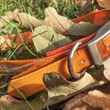
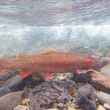

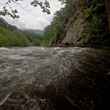



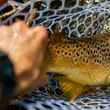















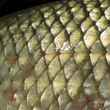




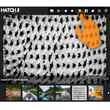
Comments
Jim replied on Permalink
Great tip with the thumb. Much easier to think about keeping your thumb running parallel to the ground than your rod tip, yet the end result is the same.
steve forsberg replied on Permalink
isn't it perpendicular to the ground?
Steve replied on Permalink
I think its 9. 12 and 3
FRANK CADA replied on Permalink
The movement of your thumb, and hence rod tip, should be parallel to the ground. Yes, your thumb would be perpendicular to the ground but it it the movement that is not.
Michael McKinley replied on Permalink
If you are casting overhead, your thumb is indeed perpendicular to the ground. BUT the PATH your thumb takes, and therefore the path of the rod tip,is parallel to the ground. Try sitting in front of a countertop, with your elbow elbow on the countertop and the outside of your palm on the counter. Your thumb should be straight up. Now bend your elbow up, keeping the elbow on the countertop. The PATH the thumb moves in is an arc. If you have a tiny wrist flip at the end,it is a bigger arc.
If you allow the elbow to rise off the countertop, and only allow your SHOULDER to move, you can develop a longer stroke needed to cast more than 40 feet. But concentrate on the PATH of your thumb nail; it should stay parallel to the ground.
Lefty Kreh videos are great for seeing this type of extended length strokes.
Steve replied on Permalink
Perfect casting is only good for perfect situations. There are none. There are so many obstacles that i just concentrate on putting the fly where the fish are. Its not pretty but catches fish.
Glenn Dotter replied on Permalink
You hit the nail on the head! I have been casting flies for 60 years and as you said I focus on putting the fly where I want it. Names of various casts dont matter. When I see someone naming a cast, I say to myself, "so that's what they call it, I just always called it a cast." You constantly have to make adjustments and I'm sure somebody has to come up with a name. Spend you time putting the fly where the fish is. Use the KISS principle.
Carlos Hidalgo replied on Permalink
The biggest tip I can guve the beginner is to not hurry the forward cast. Look over your shoulder and wait until the line unrolls on thg he backcast and loads the rod, then make the forward cast. Best place to practice casting in on the water, but not while trying to fish at the same time. (Tie a piece of yarn on leader and just go to cast.) Don't practice casting on paved druveways or roads, the line will get chewed up and ruined.
Glenn Dotter replied on Permalink
I totally disagree with practicing your casting on the water but not when you are fishing. My brother is a pilot. Another pilot told him he was going up to practice takeoffs and landings. My brother asked him if was going to do them and he said yes. To which my brother replied then you aren't practicing. If you are on the water, why not put a fly on and cast it. The fish will tell you when you did it right.
C'mon guys, KISS is Keep It Simple Stupid . Some of you are getting too technical. You seem more concerned about how you look than if you are catchin fish.
Pages